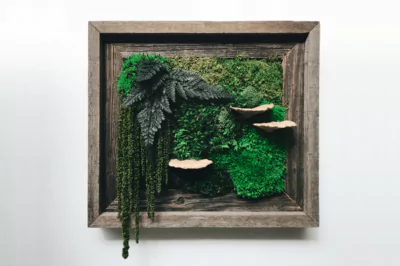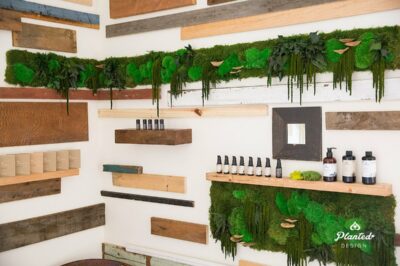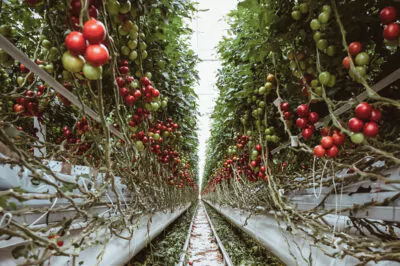Original post by our friends at Planted Design
When it comes to thinking outside the box, up might be the way to go. Not only is a living or preserved plant wall perfect for limited space, there are numerous other benefits that you probably never realized. Let's start with a living plant wall.
What is a Vertical Living Wall?
Imagine a vine covered Victorian mansion. In a sense, that was one of the very first “living walls.” These days, a modern living wall consists of a team of designers who not only create a growing, breathing piece of art, but a self-sustaining, irrigated system of plants specific to your aesthetics and needs. Beginning in the 1980's, the living wall has continued to gain momentum and will be the future of sustainable cities.

Some of the virtues of a living wall include:
- Cools the environment
- Cleans the outside and inside air of pollutants, toxins, and dust
- Is a sound proofing barrier
- Creates habitats for birds and insects
- Can be used as your own indoor or outdoor farm
- Increases your real estate value
- Boosts morale and reduces stress
Qualifies for LEED certification points from USGBC: “Leadership in Energy and Environmental Design (LEED) is a rating system devised by the United States Green Building Council (USGBC) to evaluate the environmental performance of a building and encourage market transformation towards sustainable design.”
ALL of that from planting outside the box onto the wall – Not to mention, they're beautiful.

Vertical Gardening: Take Your Garden to New Heights
This Green Wall Doesn’t Need to Be Watered (Here’s Why…)
What it was Like to Create an Oasis at The Eclipse Festival
What is a Preserved Wall?
A preserved vertical wall usually consists of dried mosses, ferns, mushrooms, driftwood, grasses, flowers, and various other plants.

For more examples click here
Why do you want a preserved plant wall? We've already established that any kind of greenery is beautiful, but here are some other benefits:
- Every plant undergoes a non-toxic preservation process
- It doesn't require much maintenance (you're welcome “brown-thumbs”)
- It reduces the carbon footprint by replacing plastic plants
- Like a living wall, it helps create a calming and inviting environment
- They have longevity and low energy consumption
As you can see, vertical walls can be the answer to the green (or brown) thumb, and small urban apartments or offices for those that want to bring more nature into their space. But whether you live in an urban or rural setting, want some eco-friendly art to spruce up your home or business, a vertical plant wall is so much more than just a green wall…
…IT'S THE PERFECT BLEND OF NATURE, ART, AND SUSTAINABILITY.

To know more about San Francisco's first community built living wall click here




Leave a Reply